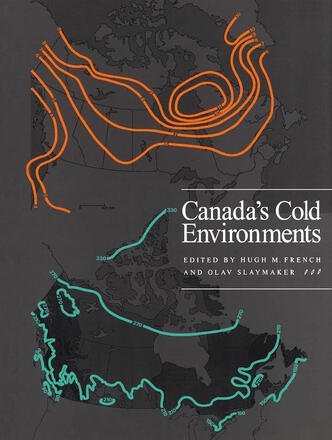
Canada's Cold Environments
Description
Low temperatures, wind-chill, snow, sea ice, and permafrost have been primary characteristics of Canada's northern and alpine environments during the past two million years. The evolution of Canada's cultural landscapes, the processes of settlement of rural areas, and the present interaction of Canadian industrial society with its biophysical environment are all deeply influenced, directly or indirectly, by the frigidity of the greater part of the country. The phenomenon of global warming, if it occurs, will lessen this coldness, but its impact on temperature extremes, sea ice regimes, vegetation, snow distribution, permafrost, glaciers, lakes, rivers, and mountain hazards are all the subject of intensive research -- the highlights of which are reviewed in Canada's Cold Environments. Eleven of Canada's leading geographers, geologists, and ecologists provide an authoritative yet readable scientific statement about the physical nature of Canada's coldness. They focus on the distinctive attributes of Canada's cold environments, their temporal and spatial variability, and the constraints that coldness places on human activity. The book is aimed at environmental scientists at all levels who need informed overviews of the substantive findings on a range of cold-related topics.
Reviews
"Excellent ... Some chapters are outstanding ... It is a form of `regional physical geography' of Canada, handled from a very special perspective. This is a most refreshing and successful treatment." Jack D. Ives, Department of Geography, University of California. "This collection of essays is well presented and authoritative ... I found the quality of the individual chapters to be high ... The editors present two solid contributions that serve to tie the volume together." John Andrews, Department of Geological Sciences, University of Colorado.